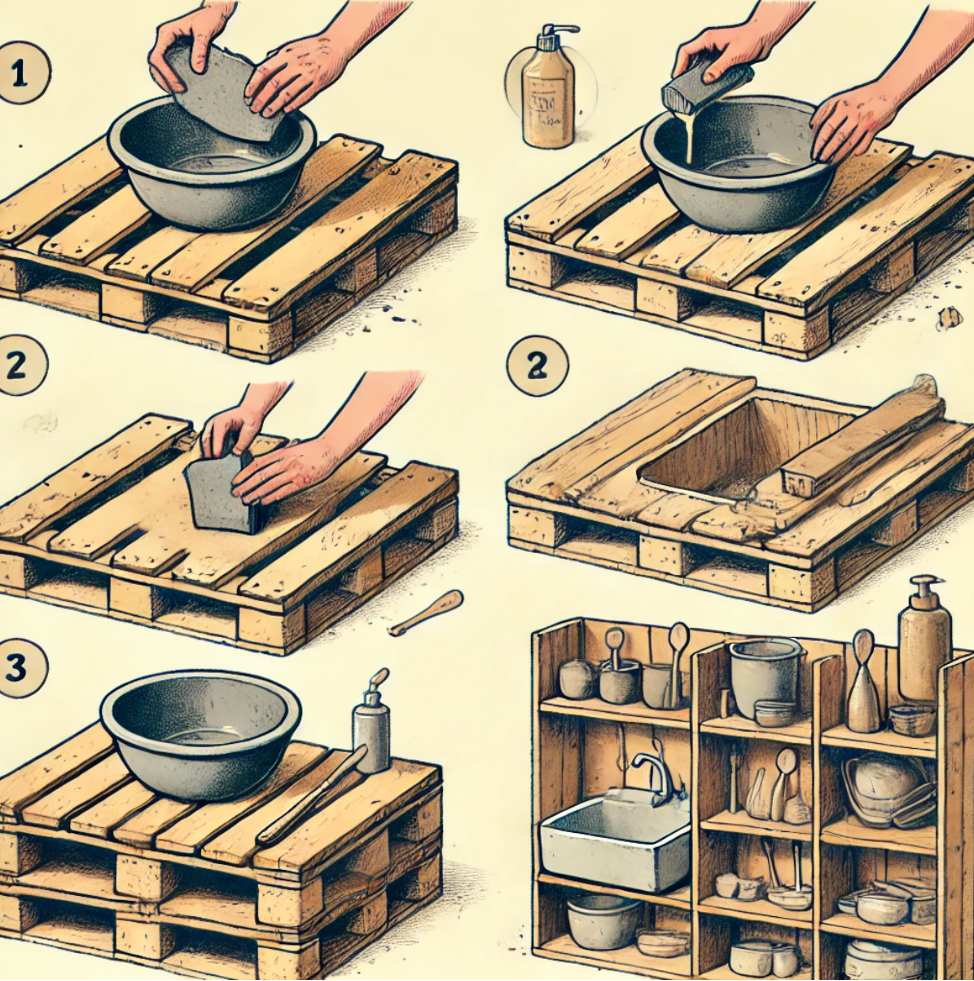Creating a mud kitchen in your backyard is a perfect DIY project that not only engages your child’s imagination but also encourages outdoor play and exploration. In this guide, we’ll show you how to make a mud kitchen that is budget-friendly, easy to build, and will become a favorite spot for your little ones.
What Is a Mud Kitchen?
A mud kitchen is an outdoor play area designed to resemble a kitchen where kids can mix and “cook” using mud, water, and natural ingredients like leaves, sticks, or stones. It allows children to engage in pretend play while connecting with nature, promoting creativity and sensory exploration.
Materials You’ll Need
Before you begin, gather these basic materials. You can use upcycled or budget-friendly items to keep costs low.
- Wooden pallets or old furniture (such as an unused table or countertop)
- Large plastic or metal bowls for sinks
- Old pots, pans, and kitchen utensils (whisks, spoons, ladles)
- Buckets for water or mud mixing
- Waterproof paint or outdoor sealer (optional for wood protection)
- Screws and nails
- Sandpaper (for smoothing rough wood surfaces)
- Handheld tools like a hammer, drill, and screwdriver
Step-by-Step Guide to Building Your DIY Mud Kitchen

1. Choose the Location
Pick a spot in your backyard that can handle some mess. Ideally, choose an area near a hose or water source so the kids can easily mix water with the mud. Make sure the ground drains well, as this area will get quite muddy.
2. Prepare the Base
You can use an old table or a wooden pallet as the base of your mud kitchen. If using pallets, flip one upside down to form the countertop and secure another upright piece to act as the backboard.
If you’re using an old piece of furniture, remove any sharp edges or nails, and sand the surface to prevent splinters.
3. Install the Sink
For a sink, use a large bowl or a repurposed plastic container. Cut a hole in the countertop where the bowl will sit. Once you’ve positioned the bowl, secure it in place with screws or nails. You can make it removable for easy cleaning if needed.
4. Add Shelves and Storage
Install small shelves on the backboard or sides of the kitchen for storing pots, pans, and kitchen tools. You can also hang hooks for utensils or even attach a few plastic bins to store mud and sand ingredients.
5. Personalize Your Mud Kitchen
Use waterproof paint to add a splash of color to your mud kitchen or to label areas like “sink” and “oven.” You can also let your kids decorate their kitchen with hand-painted stones or plant small flowers around it for a natural touch.
6. Stock the Mud Kitchen
Gather all the essential kitchen tools—old metal pots, wooden spoons, plastic bowls, and a few buckets of water. You can even provide natural ingredients like sand, dirt, pebbles, and leaves for them to “cook” with.
Why Build a Mud Kitchen?
Mud kitchens offer a wide range of benefits for kids, including:
- Encourages Imagination: Pretend play is critical for developing creativity. Kids can “bake mud pies,” “boil leaves,” or even “brew potions.”
- Hands-On Learning: It provides a great opportunity for kids to learn about nature, textures, and the science of mixing.
- Promotes Outdoor Play: It encourages children to step outside and interact with the natural environment rather than being glued to screens indoors.
- Boosts Sensory Development: Mixing mud, water, and sand introduces kids to different textures, temperatures, and even sounds.
Tips for Maintaining Your Mud Kitchen
- Keep It Safe: Make sure there are no sharp edges or nails that could harm your child. Check the kitchen periodically for any repairs.
- Store Utensils Properly: Provide a small storage bin or shelf to keep kitchen tools organized when not in use. This will make clean-up easier and prolong the life of your mud kitchen.
- Add Seasonal Elements: Incorporate natural items like fallen leaves in the fall or small flower petals in the spring to give your kids new materials to “cook” with each season.
Conclusion
Building a DIY mud kitchen is a rewarding project that provides endless entertainment for your kids while encouraging outdoor play and imagination. It’s a low-cost, high-value addition to your backyard that helps children connect with nature, learn through play, and get a little dirty in the process. Whether you’re reusing old furniture or building from scratch, your kids will love having their very own outdoor kitchen.

